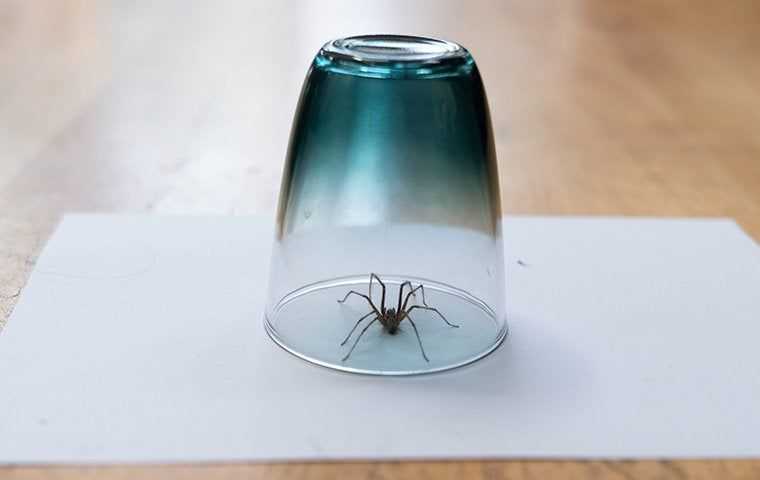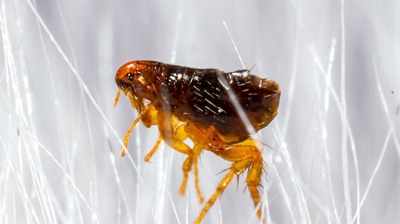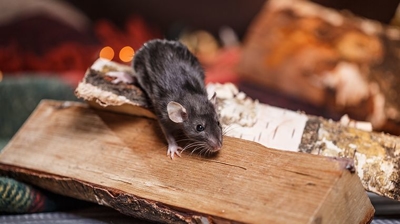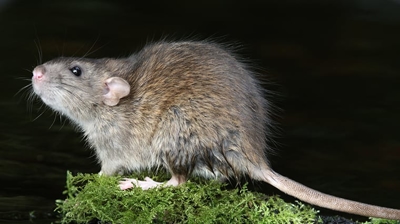
Spider Identification & Prevention
What are hunting spiders?
All spiders, including those that actively hunt, are arachnids. That means they have two body parts and eight legs. Spiders are relatives of scorpions, ticks, and more. Hunting spider varieties specifically stalk their prey, much like big cats or wolves, making the wolf spider quite deserving of its name.
Wolf spiders even look a little like a wolf because they’re dark grey and hairy. Meanwhile, yellow sac spiders are light tan with a yellow abdomen, though they do have a similar body shape to wolf spiders, with long forelegs for catching prey. An ongoing pest control and prevention plan is the key to successfully ridding your home of spiders and their pest prey.
Where do hunting spiders live?
Yellow sac and wolf spiders live wherever their prey is. Wolf spiders will sometimes dig burrows or make holes under fallen trees or rocks, and other times they’ll set up shop wherever is convenient, such as existing holes or hollows. Yellow sac spiders, meanwhile, live inside “sac” retreats they build for themselves using silk.
Are hunting spiders dangerous?
All spiders are venomous, including these hunting spiders. However, neither the wolf spider nor the yellow sac spider is considered a threat to humans. Their bites can be painful, but unless you’re allergic, you’ll likely suffer nothing worse than what feels like a bee sting. You might have pain at the site of the bite and localized swelling, but your life won’t be in danger.
Effective Spider Identification & Prevention in Greenville, MI: Local Insights
Living in Greenville, MI, you’re no stranger to our local environment's unique challenges, especially when dealing with pests like spiders. The humid climate and lush greenery around areas like Tower Park and Baldwin Lake create the perfect habitat for wolves and yellow sac spiders. These spiders often find their way into homes, seeking shelter and food, which can be a significant concern for residents.
Our team understands the specific needs of Greenville homeowners. The local government, including the Montcalm County Health Department, emphasizes maintaining a pest-free environment to ensure public health and safety. While not directly affiliated with these entities, we align our services with their guidelines to provide the best possible spider identification and prevention solutions.
One of the joint pain points for residents in Greenville is the sudden appearance of spiders in homes, especially during the warmer months. This can be particularly unsettling for families with young children or pets. Our comprehensive spider identification and prevention services are designed to address these concerns effectively. We use safe and environmentally friendly methods to eliminate spiders and prevent future infestations, giving you peace of mind.
Whether you live near Baldwin Heights Elementary School or in the bustling downtown area, our team is familiar with the local geography and the specific spider species prevalent here. We tailor our approach to suit the unique conditions of your neighborhood, ensuring that your home remains spider-free all year round. Contact us today to learn more about our effective spider identification and prevention services in Greenville, MI.

What Makes Us Different?
-
Veteran Owned & OperatedProudly serving with honor, expertise, and dedicated to quality.
-
Over 151 Businesses ServicedSureShot Pest Control is proud to be a catalyst of change for hundreds of local businesses in Michigan.
-
1,500 Happy Customers & Counting!We are proud to maintain an A+ rating from the Better Business Bureau and bring the best to our clients.
-
30+ Years Of Combined ExperienceWe have spent a quarter-century in the pest control industry, and we have no intention of stopping now!
How do I get rid of hunting spiders?
Getting rid of hunting spiders begins with getting rid of the infestations attracting them. The good news is we’re experts of pest control in Greenville and all throughout Michigan here at SureShot Pest Control! We can help you not only get rid of the spiders infesting your home, but whatever infestation is drawing them in as well.
Contact us to get started with residential and commercial exterminator services today!


Hear From Our Happy Customers
At SureShot Pest Control, your satisfaction is our priority! See for yourself what our customers have to say about working with us.
-
"Professional & Courteous"
Chris was a wonderful knowledgeable man. He answered all questions with respect and engagement. I have used SureShot for years and will continue to do so.
Anne W. -
"Outstanding Experience"
Our technician did a good job spraying the outside of our home for bees. He was mindful of our patio furniture on our decks near where he had to spray. We appreciate that.
Kim H. -
"Above & Beyond"
These guys are great! They are friendly and responsive and take care of their customers!
Bailey C. -
"Thanks again!"
Sureshot has wonderful service and are always professional. They have done a great job both inside and outside my home.
Darlene M. -
"A Loyal Customer"
I liked the suggestions that Christian had for the mice in the garage. He was very informative. Have used SureShot for over 20 years.
Irene E. -
"Highly recommend"
SureShot has always done a great job of clearing our property of hornets. On the years that we didn't actually find a nest or evidence of a hornet problem, we had them do preventative work.
Georgia E. -
"Reliable, dependable, friendly & helpful."
No bugs or mice in our home since using SureShot Pest Control for over 4 years. We highly recommend their service!!!
Bonnie D. -
"Thank you!"
Ashley is very friendly and professional at the same time. She completes the job thoroughly and quickly. I’m very pleased to have her as my technician.
Gary D.
Stay In The Know
-
 Signs of a Rodent InfestationRead More
Signs of a Rodent InfestationRead More -
 Tackling Flea Infestations Head-On In GreenvilleRead More
Tackling Flea Infestations Head-On In GreenvilleRead More -
 Start The Year Off Right: Winter Pest Prevention Tips For Greenville ResidentsRead More
Start The Year Off Right: Winter Pest Prevention Tips For Greenville ResidentsRead More -
 Greenville's Guide To Wildlife ControlRead More
Greenville's Guide To Wildlife ControlRead More -
 Keeping Rodents Out: Expert Control Strategies For Greenville PropertiesRead More
Keeping Rodents Out: Expert Control Strategies For Greenville PropertiesRead More -
 How To Get Rid Of Cockroaches: A Comprehensive Guide For Greenville HomeownersRead More
How To Get Rid Of Cockroaches: A Comprehensive Guide For Greenville HomeownersRead More -
 Rodent Control 101: Essential Tips For Keeping Your Greenville Property Rodent-FreeRead More
Rodent Control 101: Essential Tips For Keeping Your Greenville Property Rodent-FreeRead More -
 Eliminating Bed Bugs: Strategies For Effective Bed Bug Control For Your Home In GreenvilleRead More
Eliminating Bed Bugs: Strategies For Effective Bed Bug Control For Your Home In GreenvilleRead More


.2403141246092.png)










